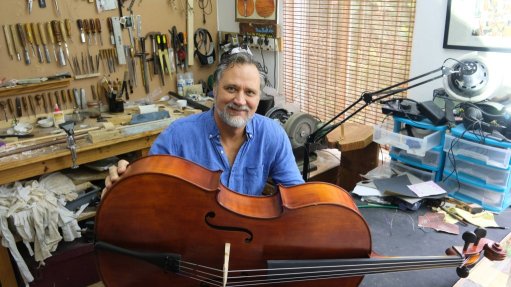South Africa in the Brics – opportunity or a lost cause?
The Brazil, Russia, India, China and South Africa (Brics) meeting held in Fortaleza, Brazil, in July, ended with the establishment of the Brics bank, called the New Development Bank (NDB), raising not only important questions about the role of the bank but also South Africa’s place in the Brics grouping.
What we know is that South Africa will continue to occupy its seat at the Brics table. The more important question is: What kind of influence can South Africa exert over the direction of the Brics countries? This question cannot be answered easily as it is still early days.
There are, however, four reasons why South Africa would want to be part of Brics.
Firstly, recognising that Africa is vast, with substantial mineral and other resources, including some of the most lucrative fertile agricultural land along its central regions, the continent has become a major exporter of oil, gas and other important commodities to the US and China of late.
As a result, it is attracting new powers – Brics and others, such Turkey, Malaysia, Japan, South Korea – that are eager to make deals with African countries and to oust old colonial powers like France and Britain, which, in the past, carved up the African continent among themselves.
Chinese people and capital in Africa, as well as exports to the continent, have grown exponentially. In the next decade, China is possibly going to be Africa’s leading trading partner. All this is leading to what observers are calling a new scramble for Africa – not for territory, but for resources, markets and fertile land. China is in Africa for the long haul and has the capacity to sustain such longevity, compared with other powers.
South Africa, in turn, is looking to expand its own footprint and intraregional trade into Africa, and many of its major corporations are spending a great deal on banking, retail and other business to capture a sizeable share of the African consumer market. South Africa also needs Africa’s oil and gas, given the troubles in the Middle East.
Secondly, South Africa wants to hedge its political bets in the international architecture. While there is considerable friction at present between the US and China, on the one hand, and between Russia and Ukraine, on the other, the emergence of the imperfect Brics formation is seen as having great future relevance as a new sphere of influence and a counterweight to Western hegemony. Both China and Russia are playing more assertive roles in global politics and are seeking to either create new regional or global institutions, where their influence can be asserted through soft-power measures.
South Africa wants to be close to new sources of power and influence, even if it is by proxy or association.
Thirdly, growth in South Africa’s economy is a result of not only foreign direct investment – and it needs a lot of it from new geopolitical regions or powers – but also building on commodity boom periods to enhance its trade position for exports while seeking to diversify away from total dependence on traditional trading regional blocs, such as Europe and North America.
Trade with the Brics countries reached $38-billion in 2013 – a jump of 27.5%, compared with the figure for the previous year. China is now South Africa’s largest bilateral trading partner, with trade in goods increasing by 32% from $20-billion in 2012 to $27-billion in 2013. Trade between the two countries is set to grow as China shifts gear from being primarily an export-led economy to rebalancing its own economy by encouraging domestic consumption.
In the future, it is possible that China will become an important source of affordable green technologies as it seeks to position itself as a leading exporter of these technologies. This could have some benefits for South Africa, as it seeks to build its own green economy.
Finally, the NDB will be an important source of cheap finance for the roll-out of South Africa’s own large-scale infrastructure programme. South Africa has been tasked with establishing a regional centre for the bank.
The availability of cheaper sources of credit can be an important way to bring the cost of long-term infrastructure down. There is concern, though, that, as Western development finance institutions turn away from the financing of dirtier energy sources, the new bank will simply fill the gap and more consideration should be given by the NDB to investing in low-carbon technologies in the future.
There is also another worry. Despite this year’s Brics summit being proclaimed a summit of “inclusive growth [and] sustainable solutions”, the financing of large infrastructure is seen by some critics as favouring politicians and other insiders who want kick-backs from lucrative deals, given the growing scale, complexity and sophistication of corruption in South Africa. The issue of good governance and strong safeguards against corruption, human rights abuse and environmental damage has to be an important part of the NDB’s operational model and financing schemes.
Despites what could be seen as a relation between odd friends – a mix of democratic governments and centralised ‘beneficent’ authoritarianism – the Brics formation and institutions could open a new window of opportunity for the reconfiguring of international relations. In some cases, its establishment is an inevitable outcome, given the current geopolitical flux, various forms of international crisis and friction that are ongoing between the major powers.
Article Enquiry
Email Article
Save Article
Feedback
To advertise email advertising@creamermedia.co.za or click here
Comments
Press Office
Announcements
What's On
Subscribe to improve your user experience...
Option 1 (equivalent of R125 a month):
Receive a weekly copy of Creamer Media's Engineering News & Mining Weekly magazine
(print copy for those in South Africa and e-magazine for those outside of South Africa)
Receive daily email newsletters
Access to full search results
Access archive of magazine back copies
Access to Projects in Progress
Access to ONE Research Report of your choice in PDF format
Option 2 (equivalent of R375 a month):
All benefits from Option 1
PLUS
Access to Creamer Media's Research Channel Africa for ALL Research Reports, in PDF format, on various industrial and mining sectors
including Electricity; Water; Energy Transition; Hydrogen; Roads, Rail and Ports; Coal; Gold; Platinum; Battery Metals; etc.
Already a subscriber?
Forgotten your password?
Receive weekly copy of Creamer Media's Engineering News & Mining Weekly magazine (print copy for those in South Africa and e-magazine for those outside of South Africa)
➕
Recieve daily email newsletters
➕
Access to full search results
➕
Access archive of magazine back copies
➕
Access to Projects in Progress
➕
Access to ONE Research Report of your choice in PDF format
RESEARCH CHANNEL AFRICA
R4500 (equivalent of R375 a month)
SUBSCRIBEAll benefits from Option 1
➕
Access to Creamer Media's Research Channel Africa for ALL Research Reports on various industrial and mining sectors, in PDF format, including on:
Electricity
➕
Water
➕
Energy Transition
➕
Hydrogen
➕
Roads, Rail and Ports
➕
Coal
➕
Gold
➕
Platinum
➕
Battery Metals
➕
etc.
Receive all benefits from Option 1 or Option 2 delivered to numerous people at your company
➕
Multiple User names and Passwords for simultaneous log-ins
➕
Intranet integration access to all in your organisation


















